By: Lauren Hartley and Jaylen Green
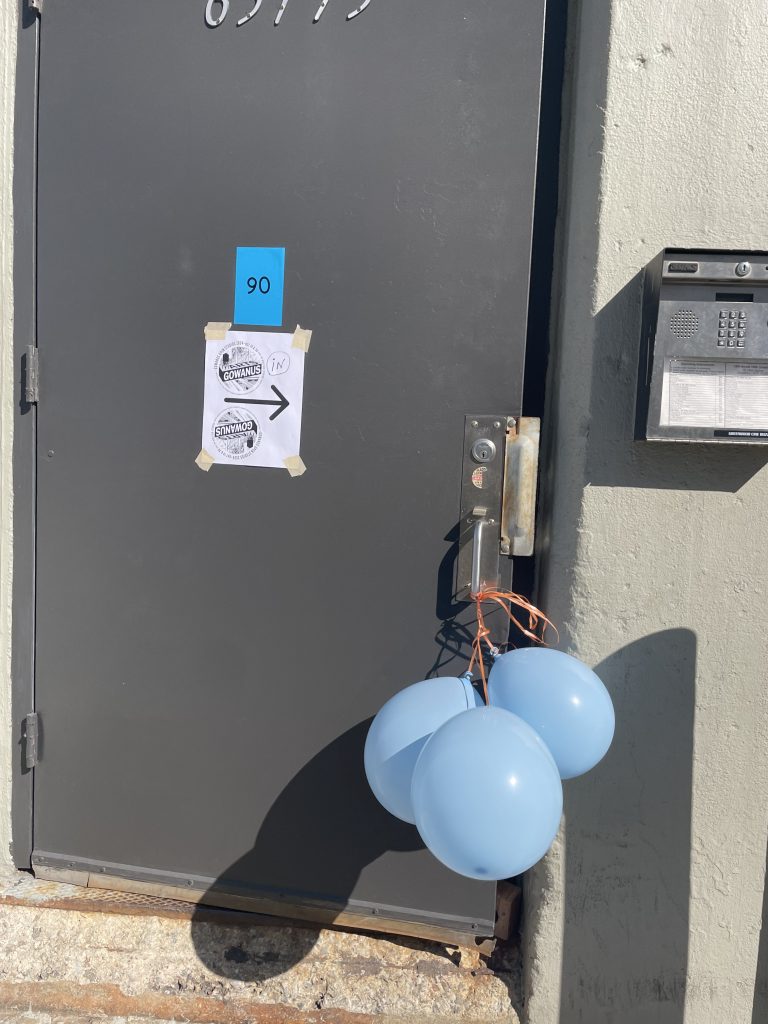
NEW YORK — Blue balloons wrapped door handles across Gowanus Saturday and Sunday, signaling to the public that they could enter to view work created by local artists.
Gowanus, a neighborhood known for its converted industrial buildings turned art spaces, hosted its 28th year of Open Studios, where hundreds of artists showcase their work out of their homes, studios, galleries, and local businesses, to welcome people into Gowanus and encourage art sales and display.
Arts Gowanus, the event organizer, is an arts and advocacy organization that helps artists across New York City and Gowanus maintain affordable access to studios and living space, publicly showcase their work, and provide resources that allow them to thrive.
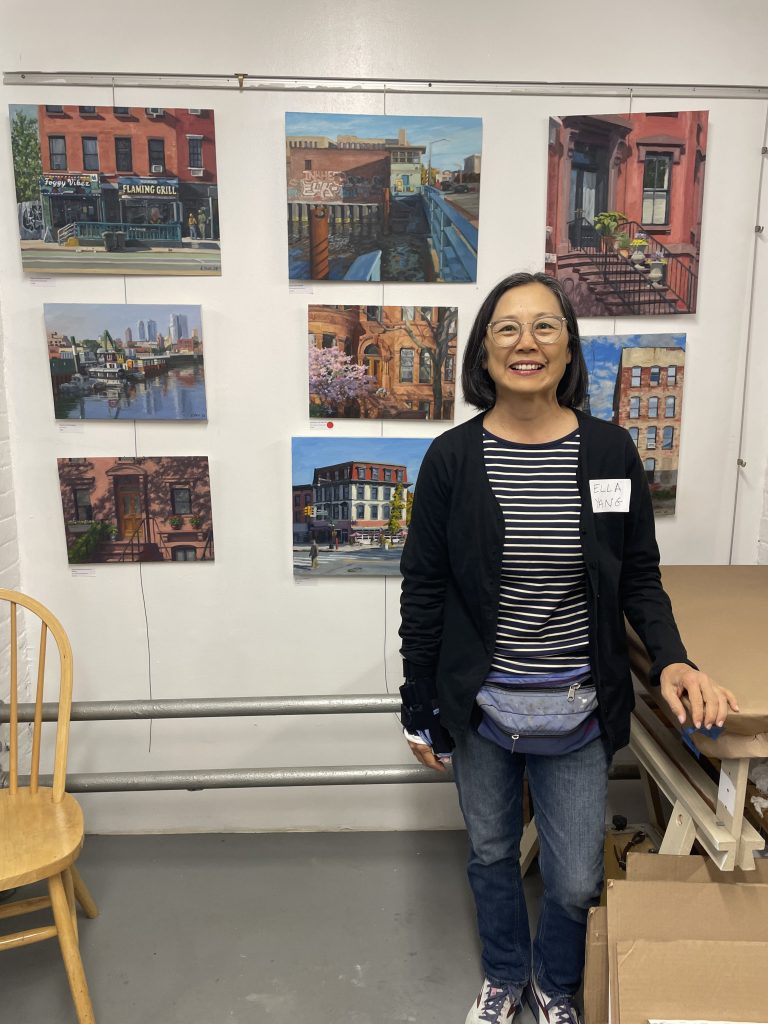
Ella Yang next to her paintings of Park Slope and Gowanus
2024 marks the 21st year Ella Yang has been participating in the Open Studios. When she first joined the Open Studios event, there were about 30 participating artists. Now, there are about 400.
One of Yang’s exhibits, titled Disappearing Gowanus showcases scenes that have now completely changed – or soon will – due to new high-rise developments, which take advantage of the rezoning near the canals.
“One of the things that was so wonderful about painting here was there was just so much sky,” Yang said, about painting in Gowanus. “There were no tall buildings, especially along the canals. I’ve done like dozens in the last twenty years of paintings of the canals and now the views are going to be completely changed, so I don’t think I’ll be painting a lot of the canal anymore.”
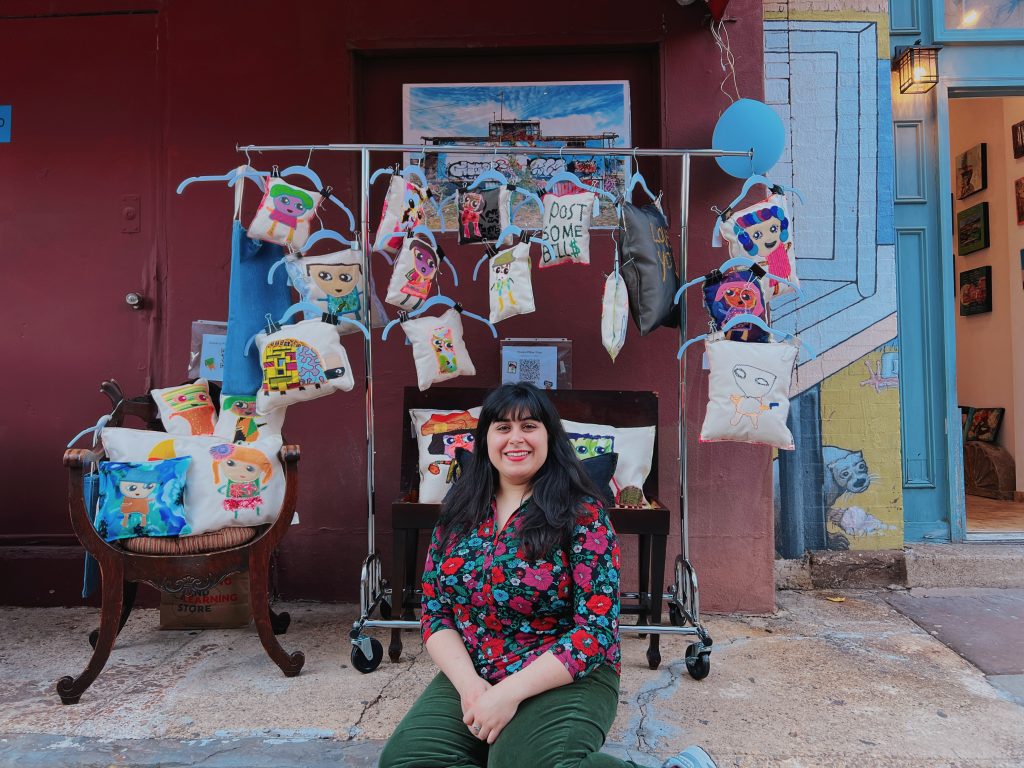
Pointing across the street to the new apartment building that casts a shadow over the studio home she grew up in, Rosie Oliveto reflects on how the neighborhood’s rapid changes have left little space for its artists to make their mark.
“They’re just trying to make it a bigger and bigger, bigger city and artists are like, wait, we’re here. We’re here too, you know?”
Growing up on Carroll Street, Oliveto was surrounded by artists like her mother that shaped her identity and encouraged self-expression.
“It’s infectious and amazing because we all can come together as a community and make art shows happen and build on each other instead of like, ‘oh, I’m an artist.’ And then it’s competitive and like everybody’s an artist, it doesn’t feel that way,” she says. “It feels like everybody’s meant to be together.”
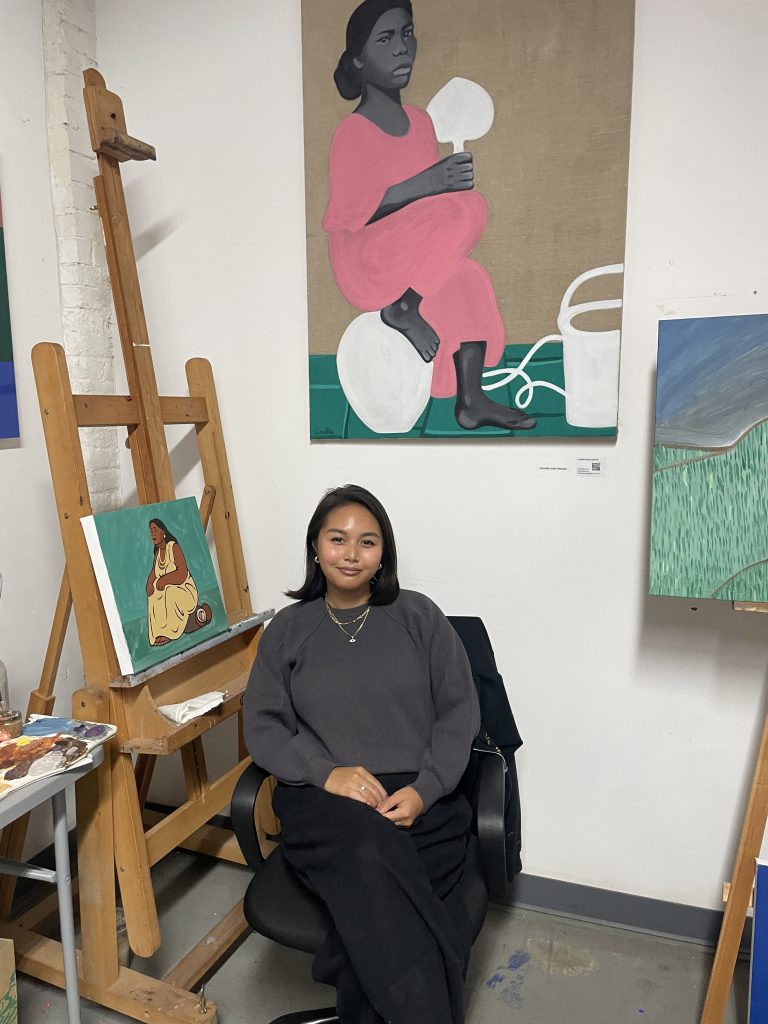
Casielle Santos-Gaerlan sees her art as a search for more belonging. As an American, she feels disconnected from her Filipino heritage. Her work, centered around Brown women, is inspired by her identity and themes of the immigrant experience, colonialism, and how it affects people and the Filipino community.
“A lot of it is also a practice of going back to my roots,” she explains about her art. “As an American I feel really disconnected, I don’t speak the language. A lot of it is a search for finding more belonging.”
Born, raised, and lives in Park Slope, Santos-Gaerlan has been impacted by gentrification and the changes in the neighborhood.
“I’ve seen a lot of businesses close and a lot of loved ones leave the neighborhood,” she says. “Eventually I do want to do more work about the neighborhood and race for different spaces that I’ve experienced in my childhood.”
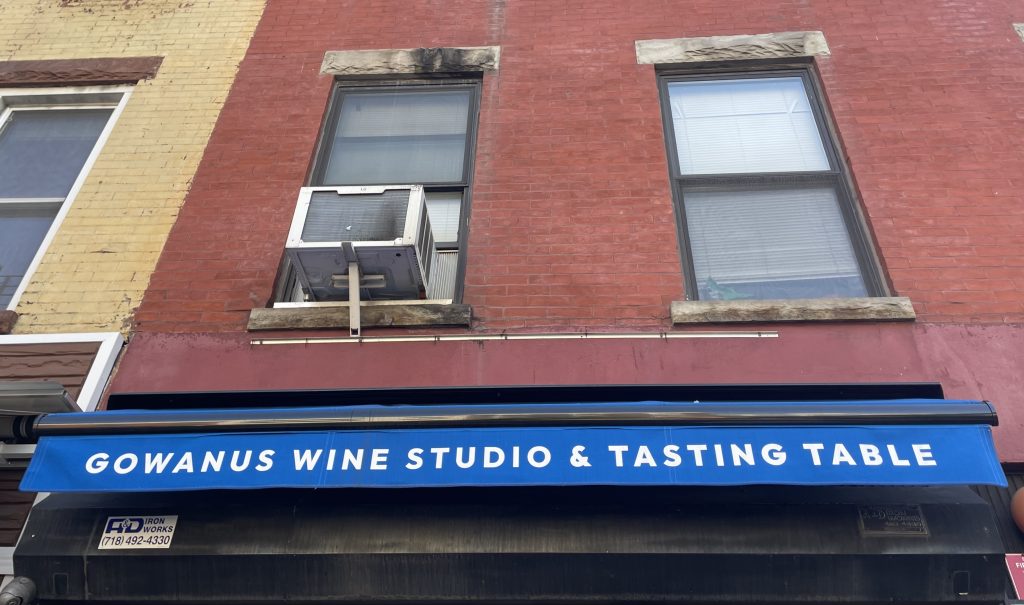
Aimee Little, Founder of Gowanus Wine Studio & Tasting Table, has made art an integral part of her business model. Part of the concept from day one was to have art representation from the community, preserving the creative culture that has long been a part of the neighborhood.
“It’s part of the culture of the neighborhood, that was here first,” Little says. “This is trying to keep in line with the roots of the area.”
As a long time resident of Gowanus, Little was aware of the anticipated influx of residents to the neighborhood, and strategically opened her business in the developing area.
As the development has begun, but people have not yet moved in, the change in the area looks obvious, but the density that will likely follow with more residences isn’t in full effect yet.
“Change is difficult in some aspects,” notes Little. “I think the Arts Gowanus in particular has done a good job of setting the stage. What they’ve done to advocate for the people that are here is special.”
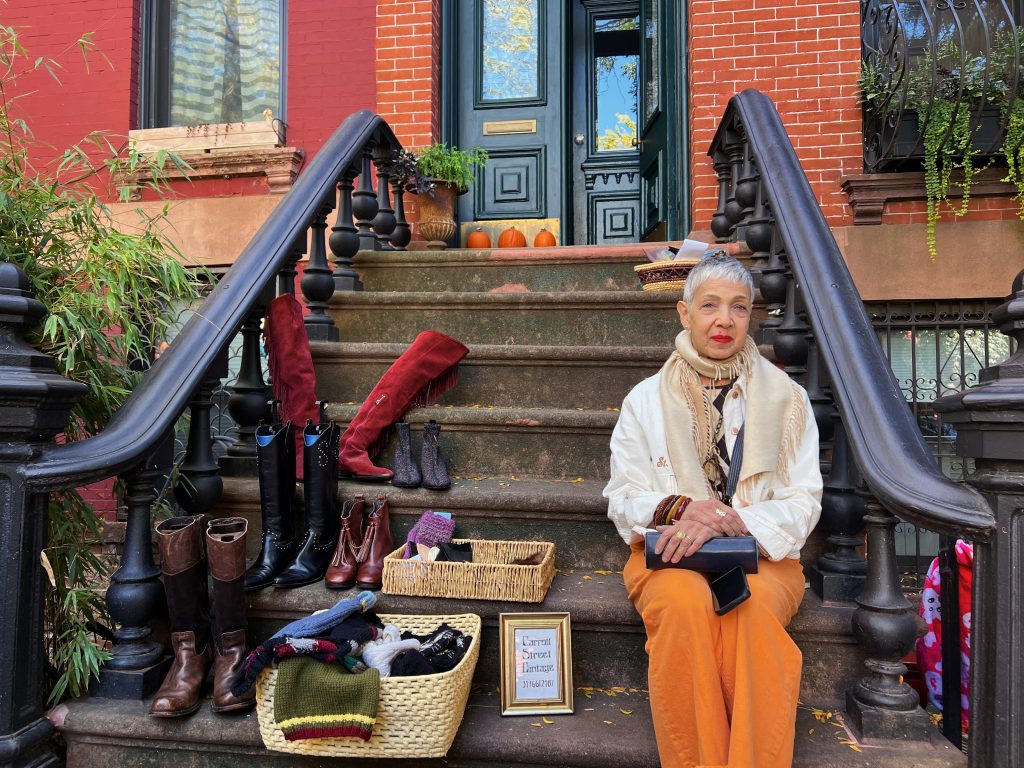
Kitty McDonough, 67, is a Brooklyn-born novelist who moved to Gowanus in 1992. She recounts the open atmospheric energy she grew accustomed to in the “industrial no man’s land” she knew as the sleepy provincial Gowanus.
“Cities change, and that’s particularly true about New York City, it’s constantly changing and inventing itself.”
McDonough loves the attention Arts Gowanus brings to local artists. The event introduces artists’ work to people who might otherwise not know of it. “It’s important to get people aware that this is happening here and it’s an artist community,” she says.
While she’s still getting used to the changes of the neighborhood, she welcomes the new energy people bring to the area.
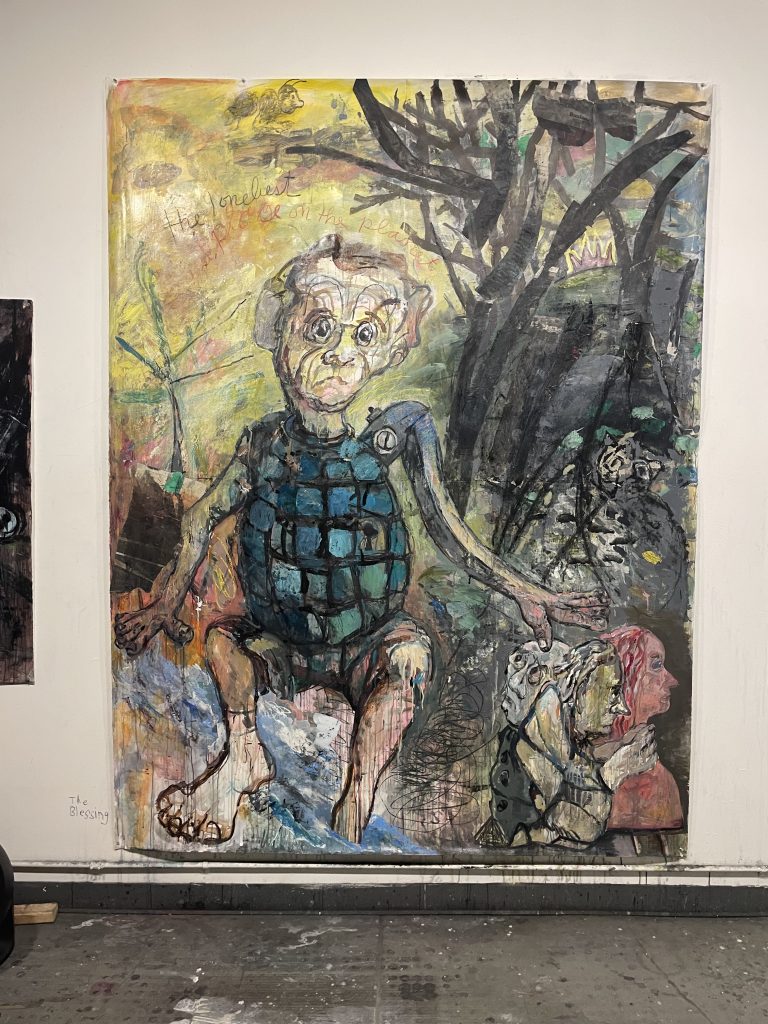
Dale Williams has been creating art in Gowanus since 1996. He became a part of the Open Studios in 1999 and helped organize the event the year after.
Williams paints hybrid figurative works from his imagination. His works evolve out of spontaneous feelings he has as he works, likening the experience to dreaming.
“You don’t plan your dreams, but afterward, you think about them—how they’re important to you, what they mean,” Dale says. “That’s what I’m always setting off towards in my work. I want to show myself something that feels like it has significance to me in that moment of making it, much like a dream might.”
Despite the lack of a fixed plan, Williams recognizes certain recurring themes in his work. “I definitely paint certain kinds of figures. I call them ‘strugglers and strivers.’
“They’re kind of involved in some sort of mysterious action and kind of emotional and you hope they get through it, whatever it is.”
A page of one of Dale Williams’ drawing books, showcasing works One Waiting and Sing Cuckoo Sing
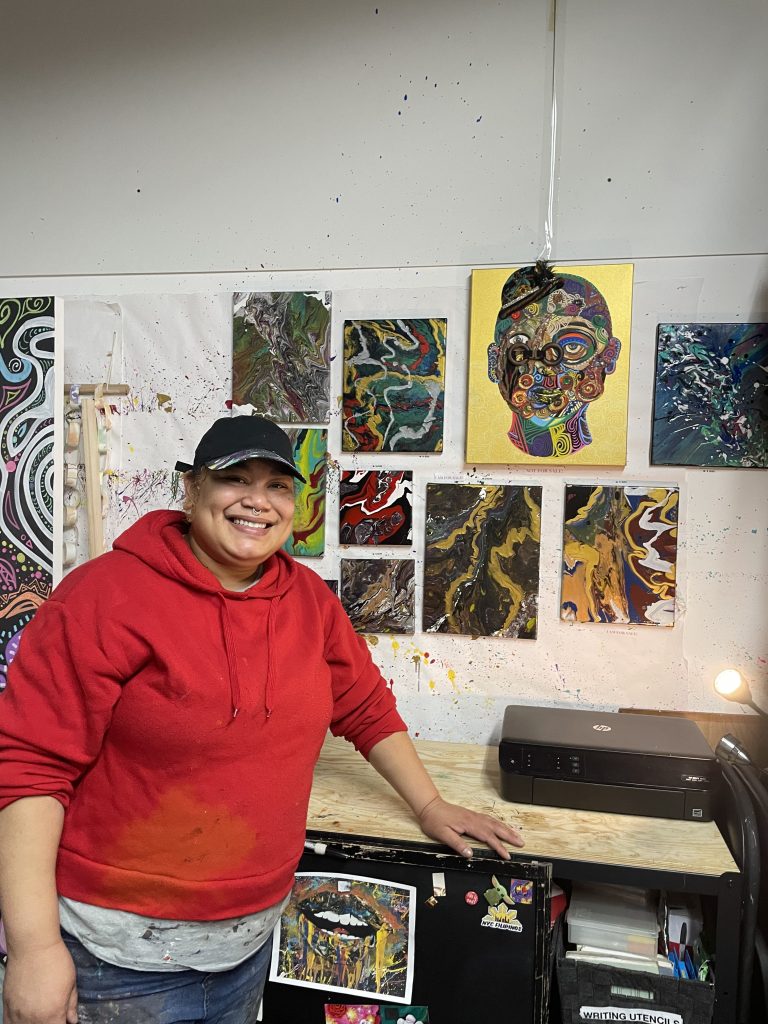
Alitha Alford is a Black American Filipina artist whose work is inspired by her ancestry and family. She remembers confiding in her grandpa that she had always been a late bloomer, and in response, he said, “Leelee it doesn’t matter if you’re a late or early bloomer, all it matters is that you bloom.”
She painted her grandpa with a flower, as an ode to that advice.
Alford initially held back from pursuing being a full-time artist because of the stigma that art can’t support you. Eventually, she chose to chase her dreams anyways.
“Art is literally my heartbeat,” she says. “It feeds my soul.”
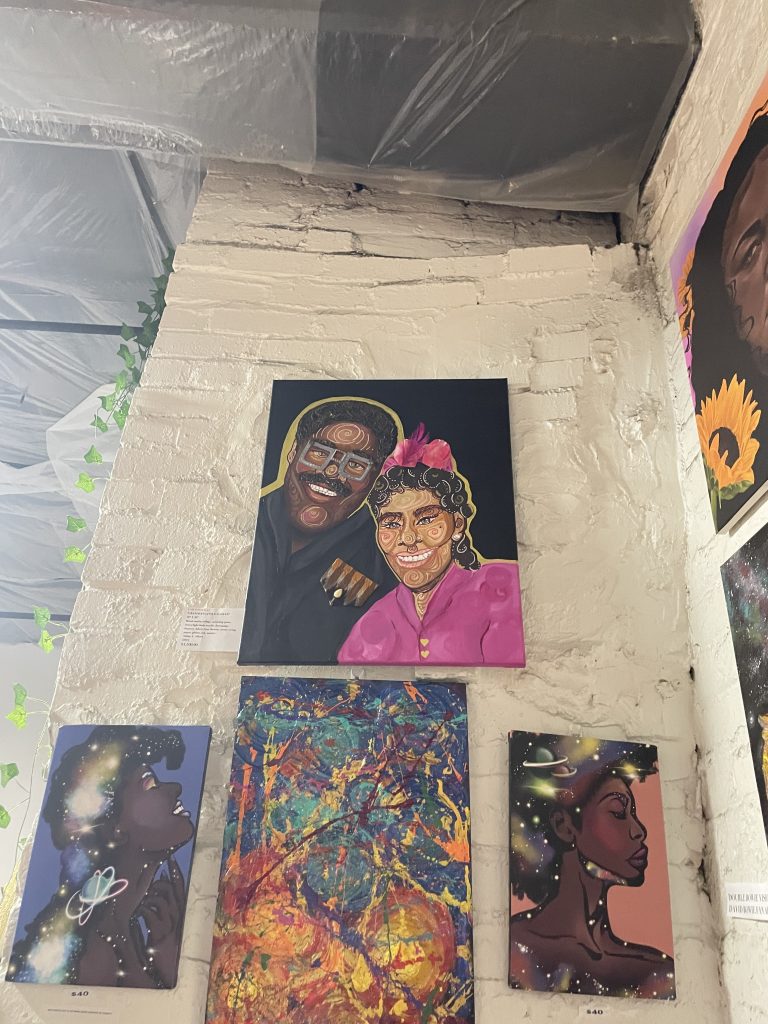
Scott Albrecht standing in front of works from artists that have inspired him. Pictured is also a skateboard and a Korean Scotch Whisky box he designed.
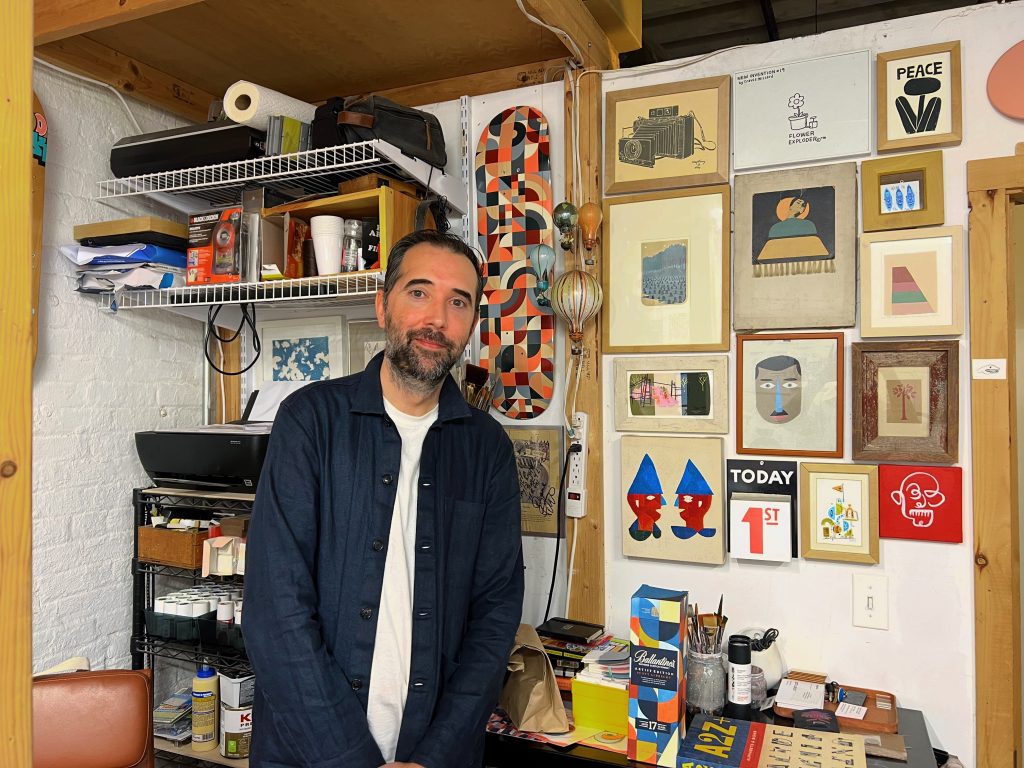
Scott Albrecht is an abstract artist with a love for writing. He noticed people reading without connecting to words on a page and wanted to use his background in graphic design to turn his love of writing into a visual work that allows viewers to engage with words in a different way.
“You can still find the letter forms, you can still look for the message, but the fact that it’s abstracted, reading becomes secondary to the experience,” he says.
Albrecht is currently working on an exhibit entitled What Holds Us that showcases works started after he sustained a severe head injury last year. He says the project branched out of his feeling of gratitude for all the love he received from those around him during his recovery. One of his works, Hold a Moment, centers around the power of telling people you love them and its influence on strengthening that moment.
Albrecht ends the excerpt of this piece with, “At the time I was reconciling a level of fear from almost not having the opportunity to express that feeling because of the severity of the injury, and I wanted to take the opportunities when I could, telling people they were important to me was nurturing.”
